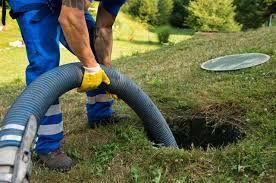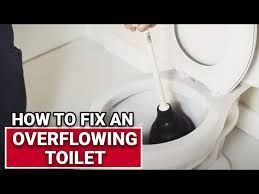Tankless Water Heaters vs. Water Heaters
When it comes to reliable hot water, every home needs a dependable system. But in today’s world, it’s no longer just about having hot water—it’s about how efficiently, conveniently, and cost-effectively you get it. The two main contenders? Tankless water heaters and traditional (storage tank) water heaters.
At first glance, they both do the same job. But a closer look reveals big differences in how they operate, how much they cost, and how well they meet your daily needs. Whether you're building a new home or replacing an old unit, making the right choice can affect your utility bills, home comfort, and maintenance needs for years to come.
Let’s break down the features side by side—explaining how each type works and which one might be the better fit for you.
How do tankless water heaters work?
How They Work: Instant vs. Stored Heating
A traditional water heater stores hot water in a large tank (usually 30 to 80 gallons) and keeps it heated around the clock. This means hot water is always available—until the tank runs out and needs time to reheat.
In contrast, a tankless water heater—also called an on-demand heater—only heats water when you turn on the tap. It pulls in cold water and uses powerful electric or gas burners to heat it instantly as it flows through the unit.
Tankless heats on demand, while traditional stores and reheats water continuously.
Hot Water Supply: Constant Flow or Limited Reserve?
A traditional heater gives you a large but limited amount of hot water. If multiple people shower one after the other, the tank can run dry—meaning you’ll have to wait for it to refill and heat again. It’s a cycle that often leads to the dreaded “cold shower.”
A tankless unit, however, never runs out—as long as demand stays within its capacity. You could theoretically run hot water all day without depleting anything. But, if multiple hot water sources are used at once (like showers, washing machines, and sinks), it may struggle to keep up if not properly sized.
Traditional heaters offer a limited supply; tankless systems provide endless hot water—but with limits on simultaneous use.
Energy Efficiency: Who Saves You More in the Long Run?
A traditional tank heater keeps water hot 24/7, which means it uses energy even when you're not using hot water. This standby heat loss contributes to higher energy bills over time.
A tankless water heater only uses energy when hot water is needed, which can significantly reduce your energy consumption. The U.S. Department of Energy estimates energy savings of up to 34% for homes that use 41 gallons or less per day.
Tankless wins the efficiency race by eliminating standby energy loss.
Upfront Cost: Budget-Friendly Now or Later?
Traditional water heaters are generally more affordable upfront. Installation is simpler, especially if you're replacing an old tank with a new one of the same size and type. Depending on your location and plumbing setup, a basic tank system might cost between $500 and $1,500 installed.
Tankless systems, on the other hand, often come with a higher upfront price tag. Installation may require additional plumbing or electrical work, especially if you're upgrading from a traditional system. Expect to spend $2,000 to $3,000 or more.
Traditional heaters are easier on your wallet upfront, but tankless heaters may save more in the long term.
Lifespan and Durability: Which Lasts Longer?
A traditional water heater typically lasts 8 to 12 years, depending on how well it's maintained and the water quality in your area.
A tankless water heater, with regular maintenance, can last 20 years or more. That’s nearly double the lifespan, making it a smarter long-term investment if you plan to stay in your home for a while.
Tankless heaters last longer and require replacement far less often.
"The Role of Expansion Tanks in Water Heater Systems"
Maintenance Needs: Routine Tasks to Keep Each Running Smoothly
Traditional systems need to be flushed annually to remove sediment from the tank. Without this, the buildup can reduce efficiency and lead to premature failure.
Tankless systems require descaling every 12 to 24 months to prevent mineral deposits on heating elements. In hard water areas, this is especially crucial. A water softener can help both systems live longer and perform better.
Both need maintenance, but tankless units are more sensitive to mineral buildup.
Space and Installation: Which Fits Better in Tight Spaces?
Traditional heaters are bulky and need floor space, typically being installed in garages, basements, or closets. They also require clearance space for air flow and safety.
Tankless units are wall-mounted and much smaller, often no larger than a suitcase. They can fit in tight spaces like under sinks or in utility closets, making them ideal for smaller homes or minimalist designs.
Tankless heaters are compact and flexible with placement—ideal for modern spaces.
Hot Water Recovery Time: Instant or Delayed Reheating?
If you drain the tank on a traditional water heater, you have to wait—sometimes 20 to 60 minutes—for it to reheat the next batch of water.
With a tankless heater, there’s no recovery time. Once hot water starts flowing, it continues as long as you need it.
Tankless heaters offer immediate and continuous recovery—traditional ones don’t.
Risk Factors: What Can Go Wrong with Each System?
With traditional systems, the biggest risks are tank leaks and bursts due to corrosion or sediment buildup. This can cause serious water damage if unnoticed.
With tankless systems, risks come from improper installation or using an undersized unit. If your tankless heater isn’t matched to your home’s demand, it can lead to inconsistent temperatures.
Traditional heaters risk water damage; tankless requires precise sizing to avoid flow issues.
Environmental Impact: Which One's Greener?
Traditional heaters consume more energy over time due to standby heat loss, increasing your home’s carbon footprint.
Tankless systems use less energy, reducing emissions and environmental impact. Plus, they last longer, which means fewer replacements and less waste in landfills.
Tankless heaters are the eco-friendlier choice.
Installation Requirements: Can Your Home Support It?
Installing a tankless heater may require gas line upgrades, special venting, or additional electrical circuits. This is especially true in older homes that weren’t built with tankless in mind.
Traditional heaters are usually easier to swap in, especially if you're replacing like-for-like. They often don’t need major plumbing or electrical changes.
Tankless may require home upgrades, while traditional fits in more easily.
Performance in Power Outages: Who Holds the Heat?
If the power goes out, a traditional gas water heater can still provide hot water from the tank—until it runs out. Electric tanks, however, stop working completely.
Most tankless systems rely on electricity, even gas-powered ones. So during an outage, they usually won’t function unless you have a backup generator.
Traditional gas tanks may still work in outages—tankless heaters typically won’t.
Best For Which Household: Who Should Choose What?
Traditional heaters are ideal for:
- Budget-conscious homeowners
- Rental properties
- Homes with very high hot water usage at once
Tankless heaters are best for:
- Long-term homeowners
- Smaller families or staggered hot water usage
- Eco-conscious households
- Homes with limited space
Match the heater to your lifestyle—not just your plumbing.
Final Verdict: Which Water Heater Wins for You?
Choosing between a tankless and a traditional water heater isn’t about which one is better in general—it’s about which one is better for you.
If you’re focused on long-term savings, energy efficiency, and space-saving convenience, a tankless water heater is worth the investment.
If you're looking for lower upfront costs, easier installation, and reliable high-volume output, a traditional water heater might still be the practical choice.
Either way, the smartest move is to talk to a professional plumber who understands your home’s needs. Because when it comes to home comfort, hot water should never be a gamble.



CONTACT INFORMATION
Office:
855-266-7682
Email:
service@AllCityPlumbers.com
Address: 6694 Oak Ridge Commerce Way, Austell, GA 30168
Business Hours:
Mon - Sun 24 Hours
OUR SERVICES
© 2022 All Rights Reserved|All City Plumbers Privacy Policy | Terms & Conditions | Sitemap

